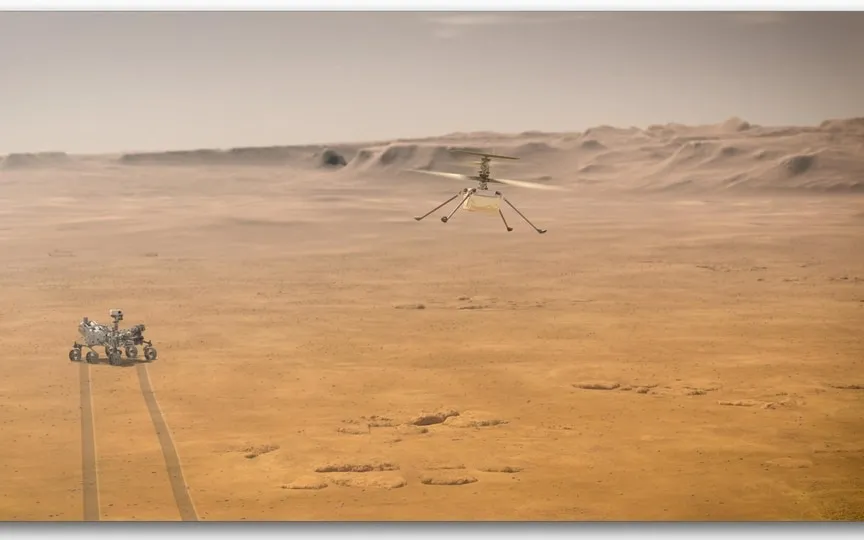NASA’s mini-helicopter Ingenuity on Mars loses contact, bringing bad news
NASA announced that it has been unable to maintain communication with its small helicopter Ingenuity during its 72nd flight. The space agency’s engineers are currently making efforts to restore contact, as the communication abruptly ceased on Thursday while the craft was descending from a test flight, according to NASA’s statement on Friday.
The large drone-like Ingenuity had arrived on Mars in 2021 with the Perseverance rover, becoming the first motorized craft to fly autonomously on another planet.
The information of the helicopter’s flight is transmitted back to the ground via Perseverance.
On Thursday’s flight — “a quick vertical pop-up flight to check the helicopter’s systems after an unplanned early landing during the previous flight,” NASA said — Ingenuity successfully reached an altitude of 40 feet (12 meters).
But “during the planned landing, communication between the helicopter and the rover was lost early, before touchdown,” the agency said, adding that “the Ingenuity team is analyzing the available information and considering the next steps to reestablish communication.”
On X, formerly Twitter, NASA’s Jet Propulsion Laboratory added that Perseverance was temporarily “out of sight with Ingenuity, but the team may consider driving closer for a visual inspection.”
NASA has lost contact with the helicopter before, including for a painful two months last year.
The mini-rotor craft, which weighs just four kilograms (1.8 pounds), has far exceeded its original goal of making five flights in 30 days on the red planet.
In all, it has traveled just over 10 miles (17 kilometers) and reached up to 79 feet (24 meters).
Its longevity has proven remarkable, especially given that it must survive ice-age cold Martian nights, and must be kept warm by solar panels that charge its batteries during daylight hours.
Working with Perseverance, it has acted as an aerial scout to help its wheeled companion search for possible signs of ancient microbial life.




